Art & Exhibitions
Looking for Art to See While Social Distancing? Here Are 5 Memorable Works at the Latest Edition of Desert X
Among the themes artists are addressing in this year's show are mass migration and climate change.
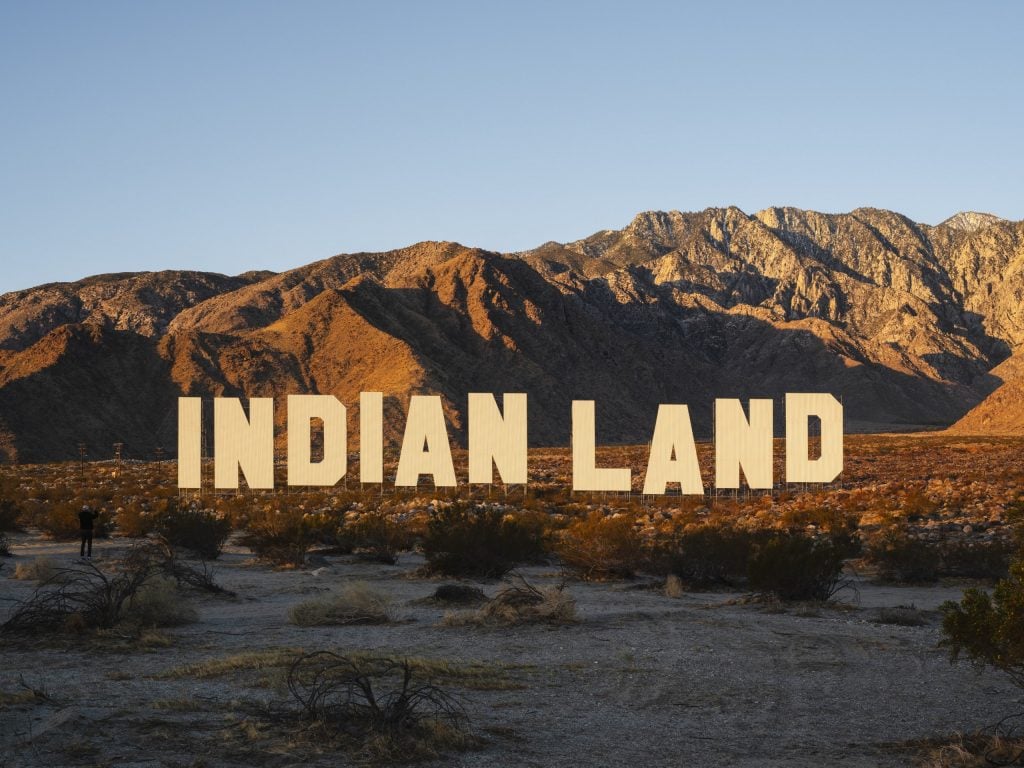
Among the themes artists are addressing in this year's show are mass migration and climate change.

Artnet News

Now in its third edition, Desert X, the outdoor exhibition in the Coachella Valley of California, features 12 site-specific projects by international artists addressing themes of mass immigration, human rights, environmental catastrophe, and more.
The show, which is on view through May 16 and is curated by Neville Wakefield and César García-Alvarez, is free to the public (though some works require free timed tickets, which are available through the Desert X website).
Below, we rounded up five standout works from the exhibition.
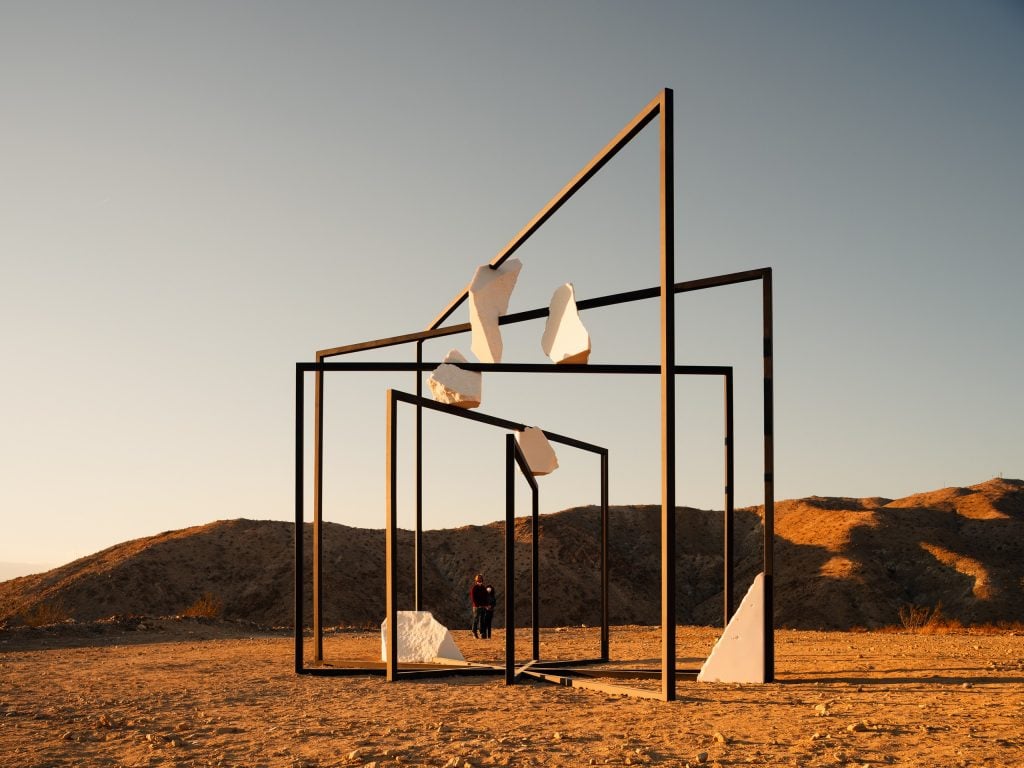
Alicja Kwade ParaPivot (sempiternal clouds). Photo courtesy of Lance Gerber, Alicja Kwade, and Desert X.
Sitting atop a hill that’s accessible only after a steep 15-minute climb is Berlin-based artist Alicja Kwade’s ParaPivot (sempiternal clouds), a work made of interlocking metal frames that appear to support large hunks of white marble that look like parts of broken glacier.
Viewers are encouraged to move in and out of the installation and observe how the marble appears to shift (and even wobble precariously) from certain angles. The work is Kwade’s comment on Heisenberg’s uncertainty principle (which asserts that “the position and the velocity of an object cannot both be measured exactly, at the same time, even in theory”) and how it applies to the instability of perception and the state of the environment.
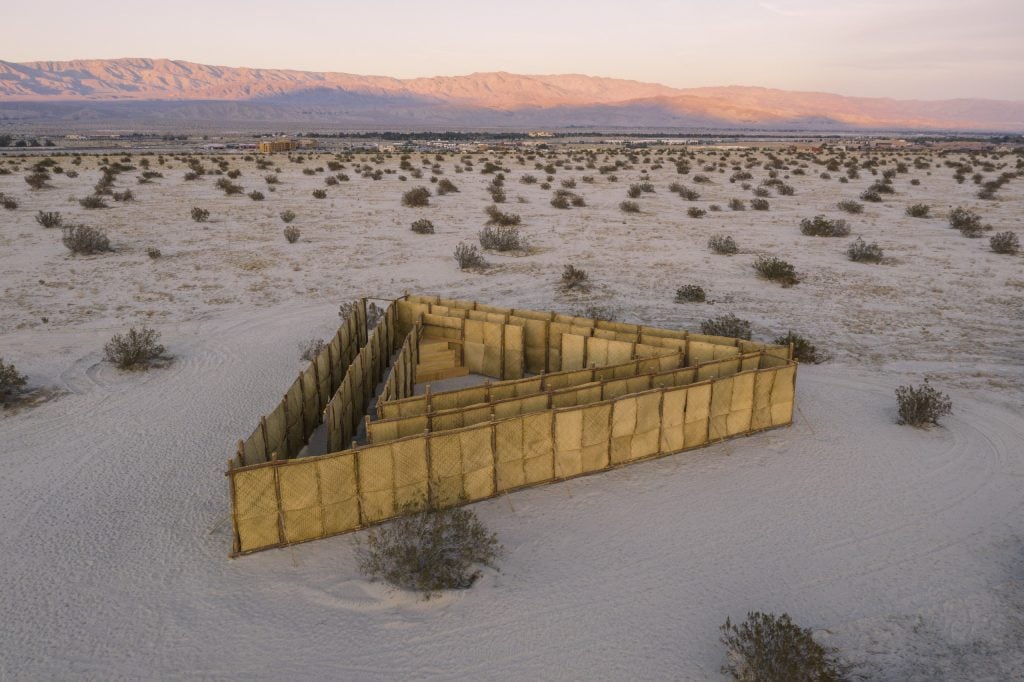
Eduardo Sarabia’s The Passenger. Photo courtesy of Lance Gerber, Eduardo Sarabia and Desert X.
Sarabia, the Guadalajara-based artist who has long explored the history of cultural exchange between Mexico and the United States, investigates the theme of intergenerational journeys in The Passenger, a maze shaped like an arrowhead that’s crafted from 350 joined “petates,” or sleeping mats woven from palm fibres.
The work comments on ancient Biblical migrations as well as present-day displacement, highlighting the journeys of immigrants looking for better lives. Viewers are encouraged to walk through the triangular labyrinth and reflect on these ideas. When they eventually reach the center, which features an open clearing, “I’m hoping they’re willing to contemplate their situation and have a little bit of perspective on somebody else’s situation,” Sarabia notes in a video on Desert X’s website.
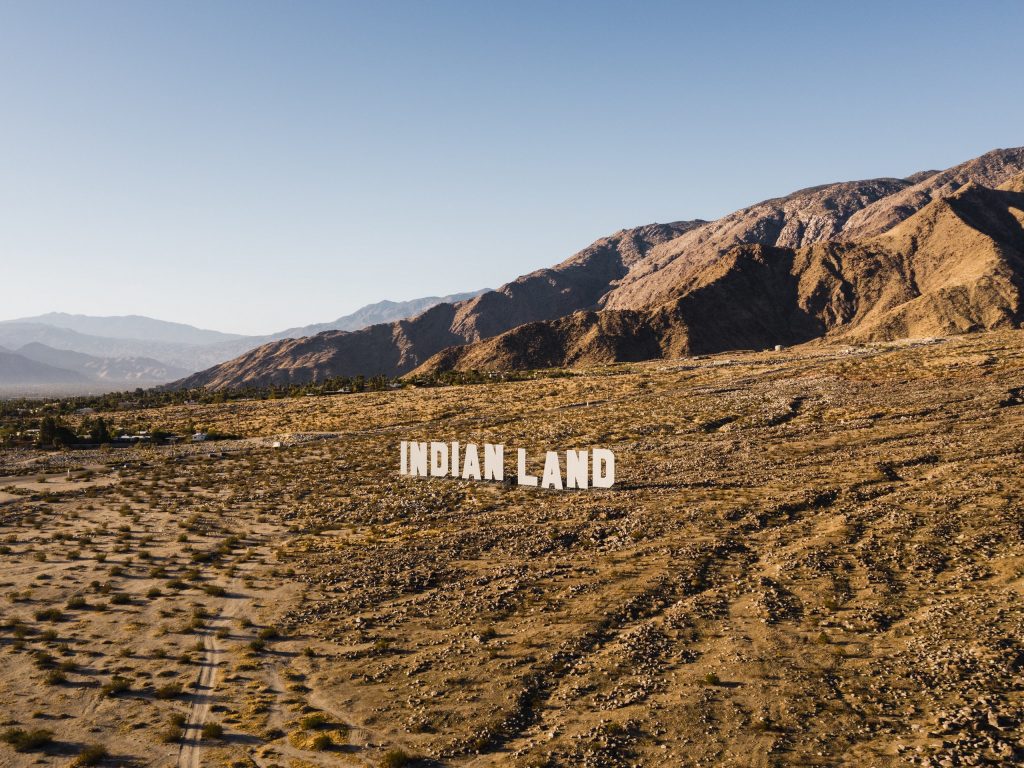
Nicholas Galanin’s Never Forget. Photo courtesy of Lance Gerber, Nicholas Galanin, and Desert X.
Galanin, a Tlingit and Unangax artist based in Sitka, Alaska, provides a critical look at the history of California and the Coachella Valley with his work Never Forget, which spells out “INDIAN LAND” in lettering that mimics the Hollywood sign, which was originally an advertisement for whites-only housing.
The work is a stark reminder that the land on which it sits originally belonged to the Cahuilla peoples. According to Galanin, it is also a call to present-day landowners to join the landback movement to return ancestral land to Native Americans. Galanin has also started a GoFundMe campaign to purchase a plot of land near the sign, which he hopes to return to the Cahuilla community.
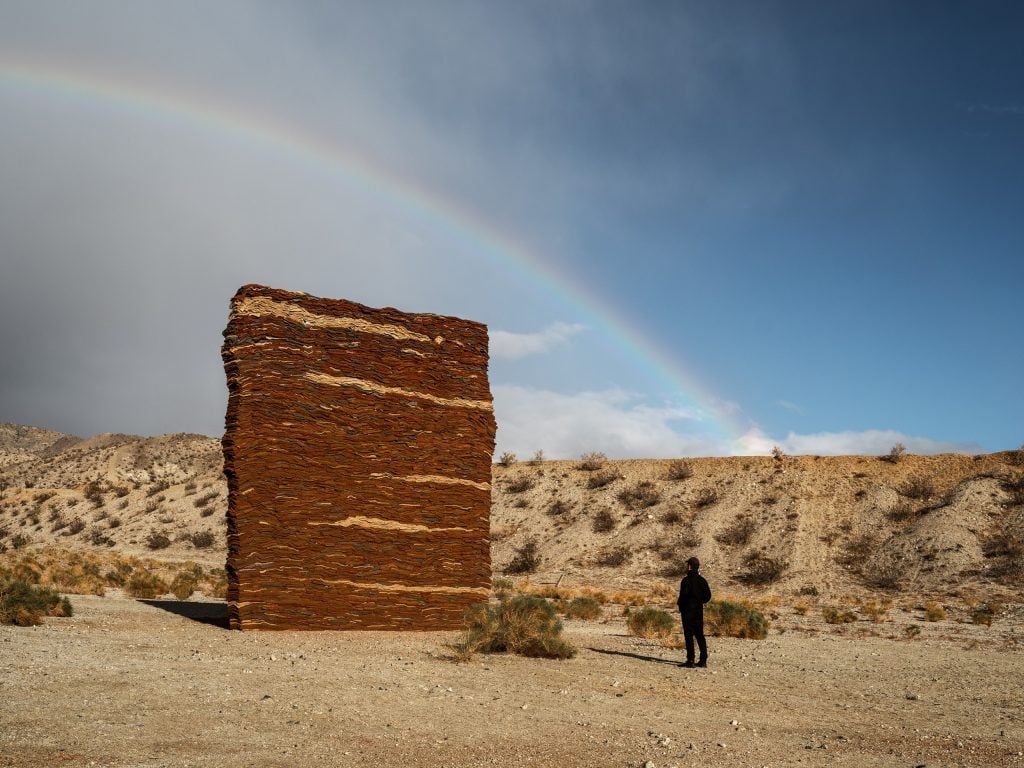
Zahra Alghamdi’s What Lies Behind the Walls. Photo courtesy of Lance Gerber, Zahra Alghamdi, and Desert X.
Saudi Arabian artist Zahrah Alghamdi’s work is often made of tightly packed layers of various organic materials representing the way memories take form and eventually coalesce into a life’s worth of experience. Her Desert X work, What Lies Behind the Walls, is a lifesize wall-like sculpture that joins together Saudi Arabian and Coachella Valley architectural forms in stacked foamy layers filled with cement, soil, and dye from both regions, suggesting how landscapes constantly change over time.
The work also comment on walls in general, and asks viewers not to view them as immovable blockages, but as invitations to peer over them to the other side. “My idea is that we should not always put up barriers,” Alghamdi notes. “We shouldn’t build walls between us.”
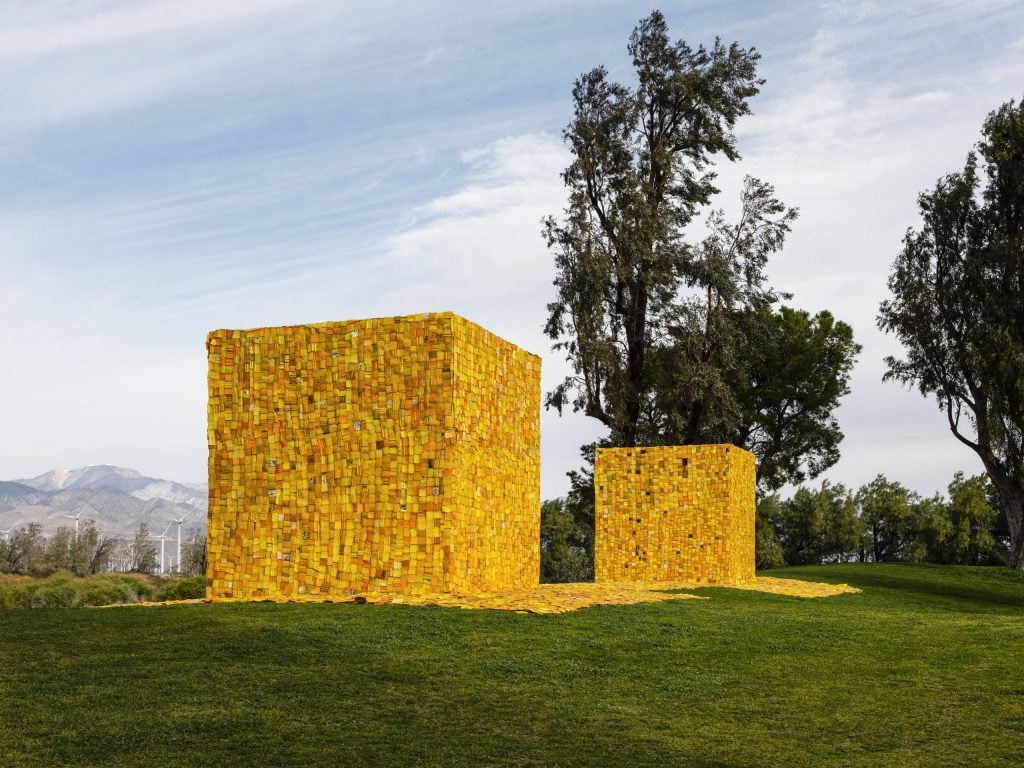
Serge Attukwei Clottey’s The Wishing Well. Photo courtesy of Lance Gerber, Serge Attukwei Clottey, and Desert X.
Artist Serge Attukwei Clottey’s The Wishing Well consists of two large-scale cubes made up of cut sheets of yellow plastic from gallon containers used to transport water in the artist’s native Ghana. The gallons were originally introduced to Ghanians by Europeans to transport cooking oil, standing in as visual symbols of colonialism and its long-term ramifications.
The title of the work references the wells to which people around the world trek to access clean drinking water. Additionally, with its placement in the Coachella Valley, it also underscores water supply issues in California and beyond, hinting at current and looming environmental challenges.